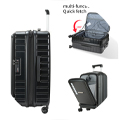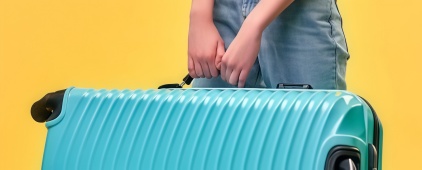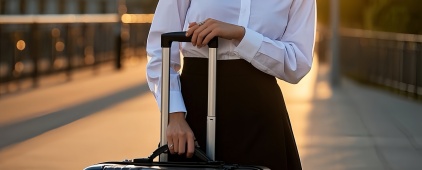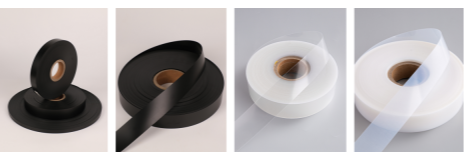How a Luggage Lock Affects the Durability of PVC Zippers and Hardware
How a Luggage Lock Affects the Durability of PVC Zippers and Hardware

Luggage locks are a usual feature in today’s travel bags. People often see them as vital for protecting items during trips. But, while they give safety, their link with bag parts—particularly PVC zippers and metal bits—brings up big questions about lasting strength. This piece looks at how bag fasteners affect the build strength of PVC closers and the wider effects for bag lasting.
What Role Does a Luggage Lock Play in Overall Luggage Functionality?
Fasteners do more than just stop theft. They form a key part of how easy bags are to use and how tough they stay.
The Purpose of Luggage Locks in Modern Travel
Bag fasteners work to keep personal items safe from wrong access during trips. If moving through crowded airports or keeping bags in shared spots, voyagers count on fasteners for calm thoughts.
Types of Luggage Locks Commonly Used
The most usual bag fastener kinds include number fasteners, key fasteners, wire fasteners, and TSA-okayed fasteners. TSA-okayed ones get liked a lot for trips abroad. They let safety workers check bags without harming the fastener.
Interactions Between Locks and Zipper Mechanisms
Fasteners usually fix through closer slides or special fastener rings. This tie brings pull at the closer ends. It may make strain spots when tugged or treated badly. Over days, this can change how well the closer works under push.
Pick bags with many sections and slots to make sure best storage room. This also aids in spreading strain evenly over closers. So, it cuts need on fastening ways alone.
Pengteng knows that while safety stays important, too much pull from wrong fastener plans can cause early wear on closer setups.
Can a Luggage Lock Impact the Lifespan of PVC Zippers?
Though tough, PVC closers feel touchy to machine strain brought by fastening setups.
Stress Points Created by Locking Mechanisms
When a fastener tugs tight on two closer heads, it focuses force at their meet. For PVC stuff—which bends but stays less stretchy than metal—this can lead to shape change or splits over time.
Effects of Repeated Lock Engagement on Zipper Teeth
Regular fastening and unfastening put repeat move strain on the teeth line of PVC closers. Wrong line raises the chance of sticking or break. This happens more if users push too hard when shutting fastened closers.
Compatibility Issues Between Lock Designs and PVC Materials
Not every fastener kind pairs nicely with soft-sided bags that have PVC closers. Heavier big fasteners or stiff outside setups may twist the closer way. Or they harm nearby cloth if not held right by inside boosts.
Pengteng deals with these worries by building their bag items with boosted closer paths. These cut strain from repeat fastening moves.
How Do Locks Influence the Durability of Luggage Hardware?
Past closers, fasteners also change handles, slides, and other build parts of bags.
Tension and Pulling Forces on Handles and Sliders
When a fastened closer fights move because of tight hold, users frequently pull stronger on slides or raise handles more roughly. This extra pull speeds up wear on both parts.
Influence of Lock Weight and Placement on Structural Wear
Heavy outside big fasteners put near edges or weak joins can cause uneven balance during move. This brings uneven push spread over sides and frames. So, it may bend them over time.
Material Fatigue from Frequent Opening and Closing
Bags used a lot with fastening ways go through repeat rounds. These add to tiredness in hinges, slides, and even handle links. This shows more if these bits come from light mixes rather than boosted blends.
Pengteng lessens such problems through smart spot of built-in fasteners. They plan them to cut shifting loads over metal joins.
Are Certain Lock Designs More Compatible with PVC Zippers?
Picking the right fastener plan stays key for keeping closer wholeness without hurting safety.
TSA-Approved Locks vs. Non-TSA Locks
TSA-okayed fasteners cut harm chance during checks at borders. Officers can open them without slicing. Non-TSA fasteners might get taken off by force if seen as odd. This could harm both fastener setup and nearby closer stuff.
Built-in vs. External Lock Systems
Built-in fasteners mixed into bag frames give better line with closer ways. They cut outside pushes. On the other hand, outside big fasteners may swing or push against soft cloth spots unevenly.
Design Considerations for Minimizing Wear on PVC Components
Rounded sides, light stuff, and smooth-fastening ways all aid in cutting rub between fastener setups and gentle PVC faces.
Pengteng’s built-in TSA-okayed fastening setups get shaped just for fit with soft-cover stuff like PVC-covered cloths. This makes sure both safety and toughness.
What Should Consumers Look for When Choosing Locked PVC Luggage?
Wise buying choices can greatly make your bag last longer while keeping use.
Key Features That Protect Zippers and Hardware
Search for traits such as double-covered closer paths, boosted slide heads, soft fastener loops, and even weight spread around fastening spots. All these get planned to ease machine strain during use.
It stays better to put heavier things near the wheels. This makes sure right balance. It also cuts tug strain at fastened closer spots when rolling bags straight.
Importance of Quality Testing in Locked Luggage Systems
Makers who do strict checks under fake trip settings make sure their items stand real-world use. This includes regular fastening/unfastening rounds under weight-hold settings.
Balancing Security with Material Longevity
While high-safety traits draw eyes, they should not hurt stuff bendiness. Or bring stiff push spots that shorten item life.
Pengteng keeps checking its items using real-world fakes. This makes sure their fastening setups boost rather than weaken whole item toughness over time.
Who is Pengteng and Why Are Their Products Trusted?
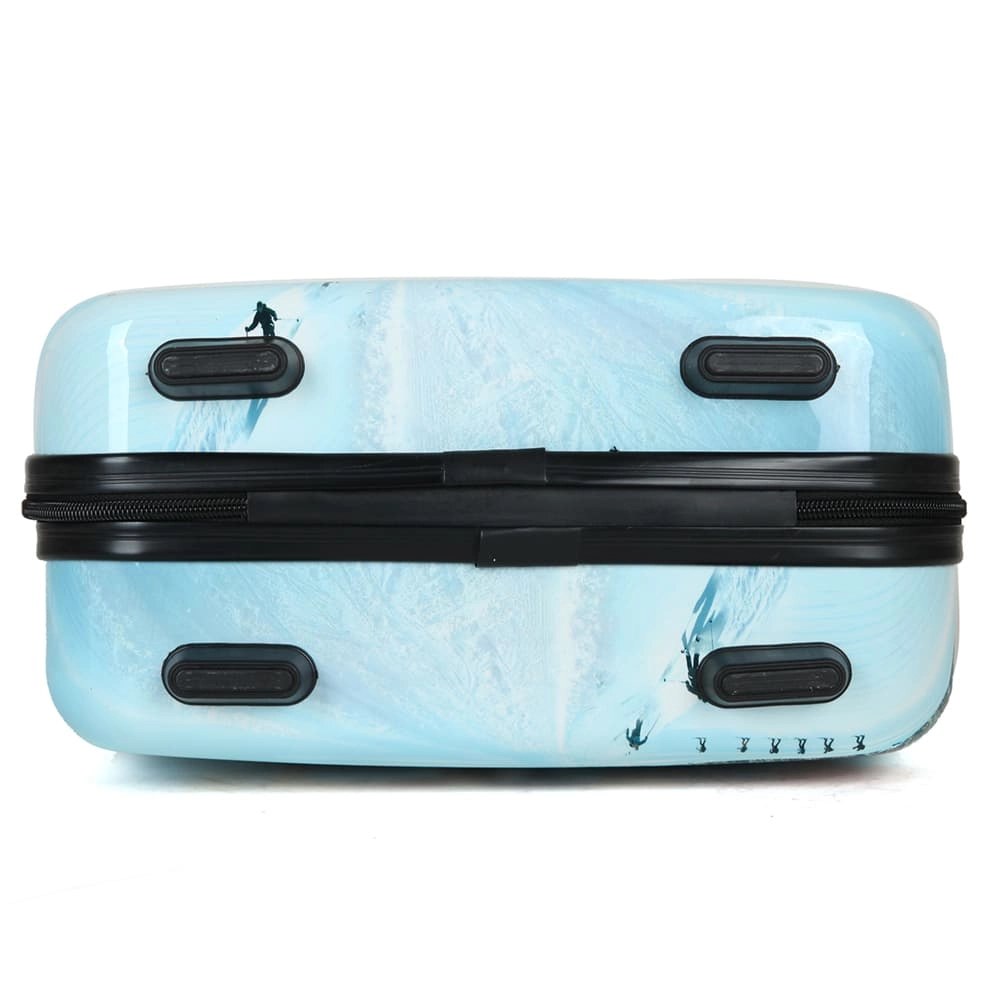
As a top name in trip tool newness, Pengteng has gained world notice for its promise to good building in every bit. This goes from closers to metal setups.
Pengteng’s Expertise in Luggage Manufacturing
With years of skill making both soft-cover and hard-cover cases across many size groups—from hand-carry bags (22x14x9 inches) to big check-in bags (27–32 inches)—Pengteng gets how every part adds to user joy during trips.
Commitment to Quality in Zipper, Hardware, and Lock Design
Their plan thought stresses team work between parts. They pick stuff that helps one another rather than fight under machine push or outside show like damp or heat changes.
Innovation in Enhancing Durability Across Product Lines
From stop-theft new ideas to body-fit handle plans that spread weight well even when fastened tight—Pengteng keeps changing what it means for bags to stay safe yet tough under steady use.
Conclusion
While a bag fastener boosts safety during your trips, its effect on lasting toughness—particularly about PVC closers—stays big. Picking fit plans like TSA-okayed built-ins aids in guarding both your items and your bag’s build over time. Brands like Pengteng guide this work through careful building that mixes safety with lasting across every bit they make.
FAQs About Luggage Locks and PVC Durability
Q1: How can I prevent damage to my luggage zippers when using a lock?
A: Avoid overtightening padlocks between zipper heads; choose built-in TSA-compatible options where possible; store heavy items near wheels to ensure proper balance which reduces strain on top-mounted zippers when rolling upright bags.
Q2: Are built-in locks better for durability than padlocks?
A: Yes. Built-in locks align better with internal reinforcements within the bag structure compared to dangling external padlocks that shift during movement causing uneven wear around soft materials like PVC coatings.
Q3: Does using a lock void my luggage warranty?
A: It depends on brand policy—but generally no unless misuse (such as forcing locked sliders) results in damage not covered under normal usage terms. Always check manufacturer guidelines before applying third-party accessories like heavy-duty padlocks.


